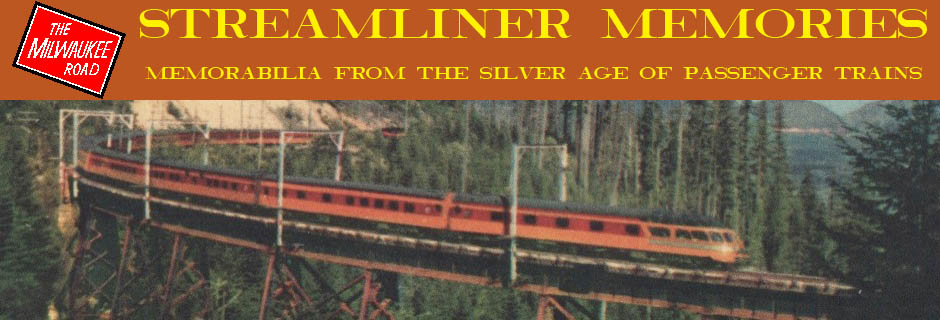Western Pacific operated two passenger trains in 1949. The California Zephyr was numbered 17 & 18, consistent with the numbers used by the Burlington and Rio Grande. The other train was numbered 1 and 2. It was a remnant of (and used the numbers of) the Royal Gorge, but that train attracted so few riders after the Zephyr was introduced that Western Pacific dropped the name. Just before this timetable was issued, it had applied to the Interstate Commerce Commission to drop the train completely.
 Click image to download a 4.3-MB PDF of this 8-page timetable.
Click image to download a 4.3-MB PDF of this 8-page timetable.
The Zephyr made nine stops between Oakland and Salt Lake City. Train 1 & 2 made as many as 38 more, some of them as little as three miles apart from one another. Despite all the extra stops, train 1 & 2 took only about five hours more than the Zephyr to make the trip. Many, if not most, of its passengers were railroad employees and it also carried mail, food, and supplies to many of the small communities on its route.
The timetable dedicates a page and a half to advertising the Zephyr but never mentions what equipment was used on train 1 and 2. By the time of this timetable, it likely consisted of a steam locomotive, some head-end cars, and one or two coaches.
The timetable notes that the New York Central and Pennsylvania railroads each operated a through Oakland-New York sleeping car via the California Zephyr every other day. It also notes that eastbound passengers heading to Kansas City or St. Louis could connect at Denver with Union Pacific’s City of St. Louis (which went over the Wabash between Kansas City and St. Louis), but there were no through cars on that route.

At some point, in the mid-to-late 1950s the train was replaced with an RDC running on a very similar schedule. The construction of I-80 and the withdrawal of the Post Office contracts in 1967 killed SP trains 21 and 22, and probably did the same the WP’s RDC service.
Aw, Joe, you spoiled tomorrow’s post!